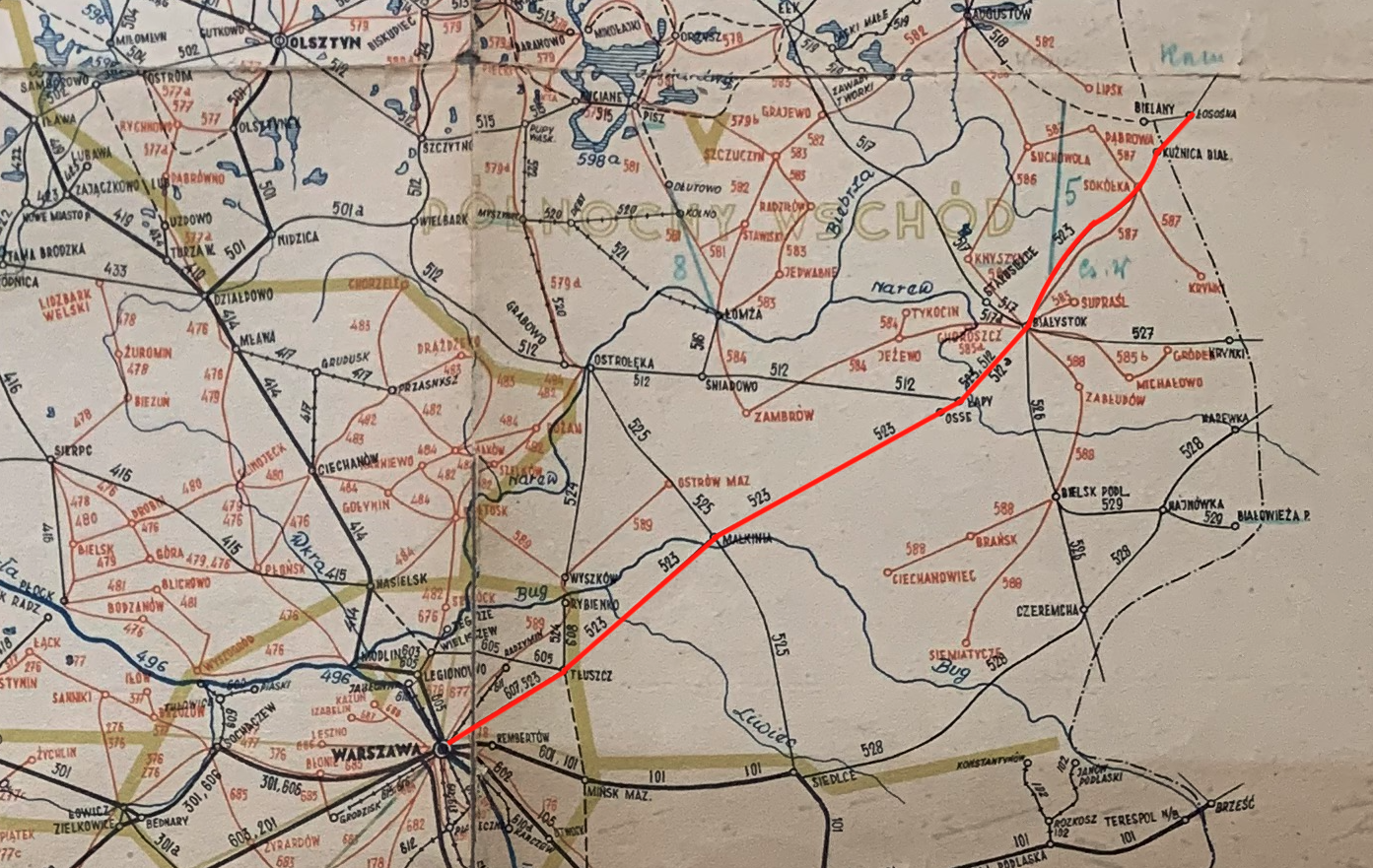Warszawa 2025-02-17
PKP Warszawa Wileńska.
Geographic coordinates: 52.255 N 21.038 E. Elevation 84.00 m (275 ft).
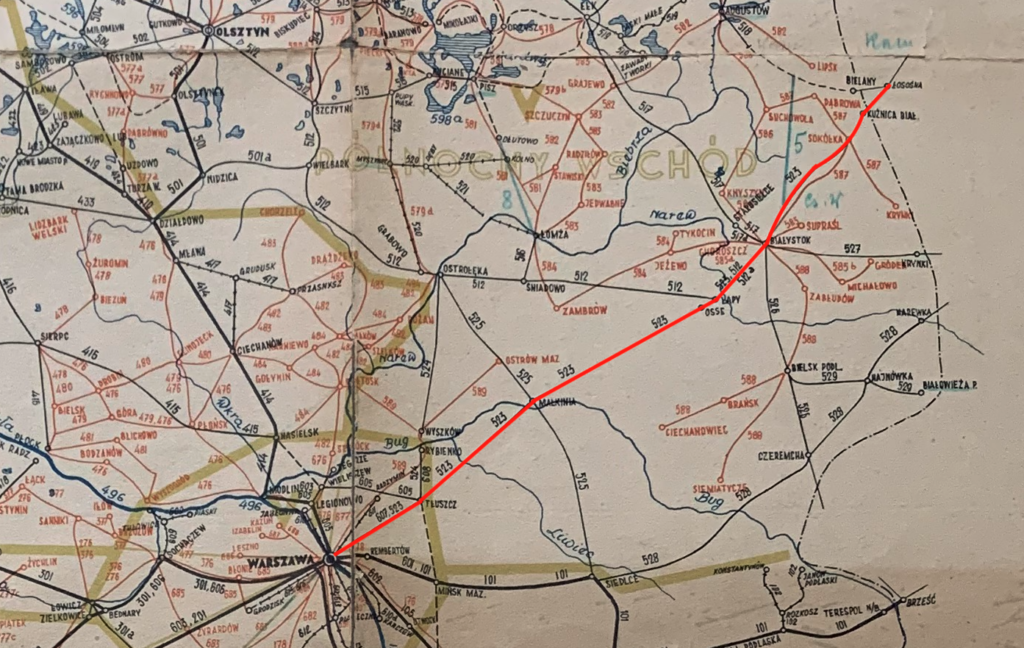
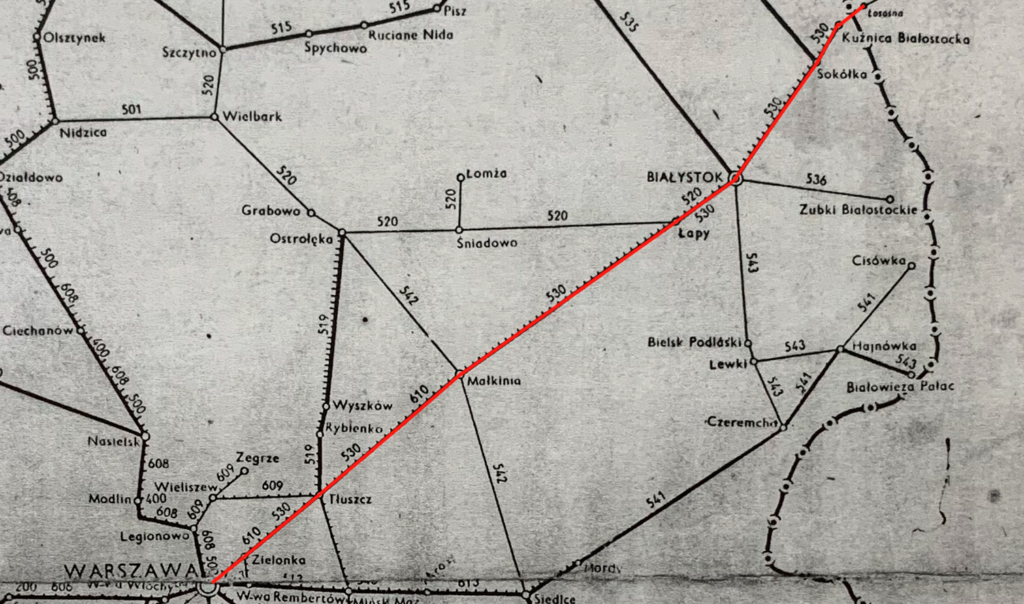
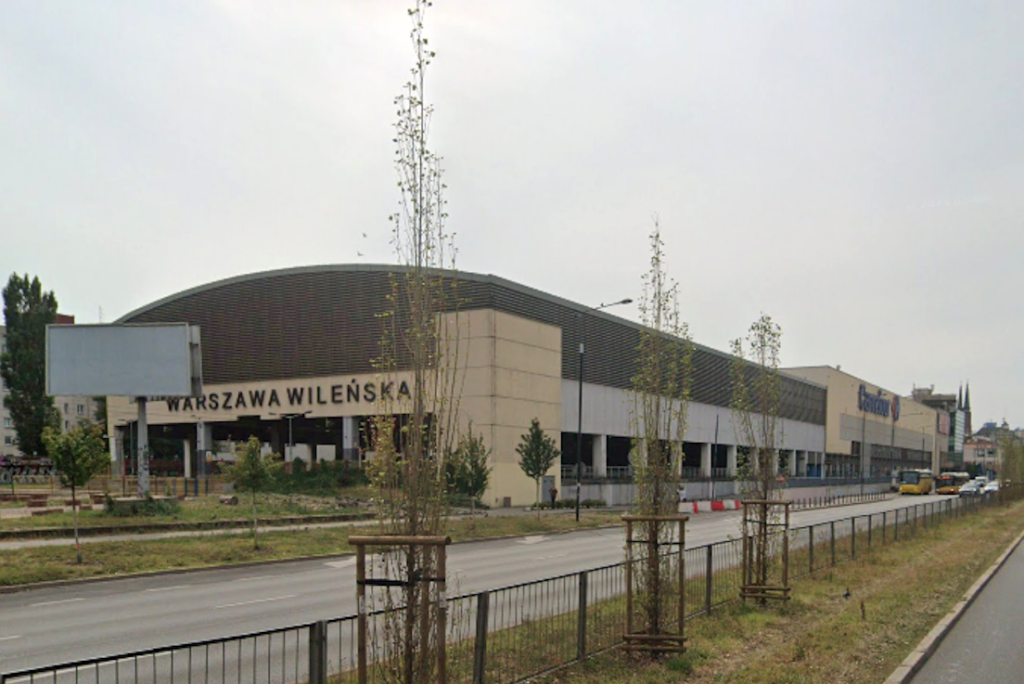
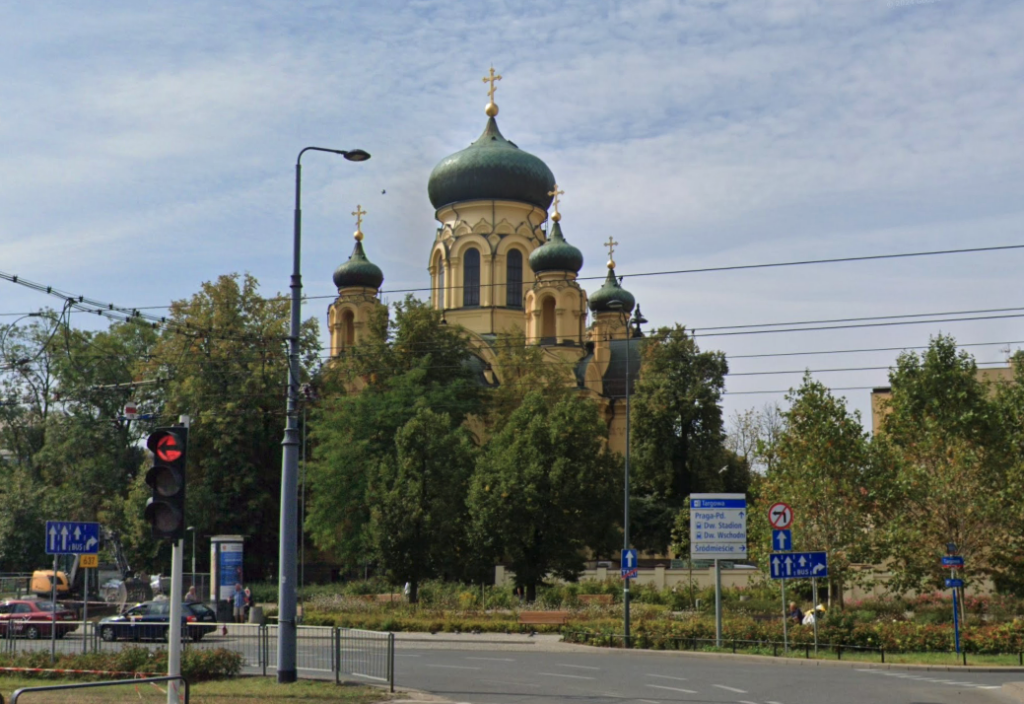
In 1862, the Petersburg Railway Station in Warsaw in Praga was officially opened, which was the starting station of the Warsaw – Petersburg Railway. It was the second station in Warsaw after the Warsaw – Vienna Railway Station. The Petersburg Railway Station was located near the intersection of today’s Wileńska and Zaokopowa streets. The station was built in the period 1859-1862, according to the design of Narcissus Zborzewski, a graduate of the Imperial Academy of Arts in St. Petersburg. The large station building was built in the arcade style. The central part of the building was two-story. Large windows topped with a semicircle were installed in the building. A cast iron roof was placed above the main entrance, and a clock above it.
The construction of the St. Petersburg Station led to the development of this part of Prague. Shops, warehouses, hotels, restaurants, taverns and service points were built. Trade developed. A large market square was created. Apartment blocks for railway workers were built. Transport companies were established to transport goods and people. The streets were gradually paved.
An Orthodox church was ordered to be built nearby. The idea was that Muscovites arriving in the Kingdom of Poland could feel at home. Currently (2025) it is the Metropolitan Cathedral of St. Mary Magdalene. The building is undoubtedly impressive, but it should be remembered that this is the outpost of the Moscow church and by throwing a penny into the piggy bank here it is as if you were personally handing it over to the regime authorities of the Moscow state.
The Warsaw-Petersburg railway line was built on the Russian gauge of 1524 mm. The entire line with branches was 1,611 km long, of which 150 km were in the territory of the Kingdom of Poland. Initially, two trains departed from the Petersburg Railway Station daily: a passenger train and a freight train, and a ticket to Petersburg in first class cost 21.50 rubles, in third class 8.60 rubles. This was a large expense. A worker’s daily wage was 2-5 rubles.
The Praga station had to be connected to the rest of the city. While it was still under construction, the first steel bridge in Warsaw was being built on the Vistula River, which was put into operation in 1864. A street was marked out from the station to the bridge. This street was named Aleksandryjska in honour of Tsar Alexander II, and is now part of Aleja Solidarności. The bridge was also officially called Aleksandryjski, but due to their dislike of Muscovites, Warsaw residents preferred to call it the Kierbedź Bridge, Stanisław Kierbedź. In December 1866, a horse tram line was launched, connecting both stations. Currently, the Śląsko-Dabrowski Bridge is located in place of the Kierbedź Bridge.
On 4 August 1915, due to the Great World War, Moscow troops carried out a complete evacuation of the rolling stock and railway equipment of the line, as well as railway and customs personnel. A planned destruction of many station buildings, engineering and technical facilities and structures was also carried out. In this way, the Petersburg Railway Station in Warsaw was destroyed, completely burned down, and its ruins were dismantled after the war. During the advance of the Prussian army to the north-east, the tracks were rebuilt to the European gauge of 1435 mm.
After Poland regained independence, rail traffic was revived. First of all, the name of the station was changed to the Vilnius Railway Station. This was an expression of the general antipathy of Poles towards the Muscovites. A temporary station was built in the place of the current Galeria Vilnius, which lasted only 26 years. The station was built on the corner of Targowa and Zygmuntowska streets, previously Aleksandryjska, and currently Aleja Solidarności. Its construction took only three months. It was a single-storey building, with the main entrance from Targowa Street. The station was destroyed by the Germans at the end of 1944.
In 1920, the destroyed building of the Petersburg Railway Station on Vilnius Street was dismantled. In this place, in the period 1927-1928, the building of the Polish State Railways Directorate was built, which still exists today, currently (2025) the headquarters of the PKP Polish Railway Lines company. The building was designed by professor Marian Lalewicz.
The ruins of the old Dworzec Petersburski station, built in 1862, remain. The depot was located in the area of the current streets; Aleja Solidarności and Ireny Kosmowskiej. In 2010, the ruins were liquidated.
In mid-1944, when the Soviets approached Prague, the retreating Germans destroyed the railway infrastructure. They took specialist equipment, machinery and devices west. In the direction of Małkina, bridges, railway tracks, switches and traffic control devices were destroyed. With the help of an anchor mounted to a steam locomotive, railway sleepers were broken. Railway buildings were blown up.
In the period 1915-1947, the role of the station was played by temporary buildings at Targowa. The small station building was renovated and survived for several years, and its life ended in the 1950s. It was then that the former warehouse buildings located on the other side of the railway tracks from Białostocka Street were adapted to the station. In this form, the barracks station operated until 2000, when construction of a shopping centre began: Galeria Wileńska, of which the new railway station became an integral element. The investment was completed in April 2002.
The Wileński Station has retained the character of a terminal station, just like the Warszawa Główna station. There were plans to connect the Warszawa Główna station and the Warszawa Wileńska station with a railway line. The estimated cost of the investment is PLN 2 billion, but currently (2025) the investment is not being considered.
The Wileński Station serves local traffic in the direction of Małkinia. The only carrier is Koleje Mazowieckie. You can usually see three-carriage EZT EN57AL here. Very often, EZT EN57AL are combined into a triple traction. During rush hours, trains depart every 10 minutes. The Warszawa Wileńska Station is very well connected. There is a metro, tram, and city buses.
Warszawa Wileńska station is completely covered. There are 2 platforms and 3 platform edges at the station. Ticket offices are located near the passage between the station and the shopping mall (Galeria Wileńska Shopping Center, previously Warszawa Wileńska Shopping Center). Access to the platforms is provided by the entrance from the shopping mall and from the eastern side through a passage at the track level. There are no barriers or traffic lights at this passage, so you need to be especially careful. Only one double-track railway line No. 21 Warszawa Wileńska – Wołomin Słoneczna leaves the station. The station serves from 10,000 to 20,000 passengers per day. Train connections: Czyżew, Łochów, Małkinia, Tłuszcz. Track layout. There are 4 side tracks at the station, on the northern side and a set of sidings on the southern side.
Railway Line No. 6.
Railway Line No. 6 together with LK No. 21, is the former route of the Warsaw – Petersburg Railway, within the borders of present-day Poland. LK No. 21 Wileński Station – Zielonka, while LK No. 6 is the Zielonka – Kuźnica Białostocka route. LK No. 6 has a length of 224.163 km, is electrified with 3 KV DC current. The line is double-track, but there are also four-track sections. The line is referred to as the international line E75 (I Pan-European Transport Corridor) connecting Warsaw with Helsinki. In Poland it is called “Rail Baltica”.
On September 2, 1933, the LK No. 449 link was launched, which connected the stations of Warsaw Rembertów – Zielonka. The link is double-track. The link allowed trains from Białystok to be directed directly to the Warszawa Główna station (now Warszawa Centralna) and then to southwestern Poland.
Electrification.
A statement by one of the Polish communists concerning the electrification of the railways has been preserved: “Despite the enormous successes and superiority of Soviet electrification technologies, our big brother, for now, cannot help in the reconstruction of the Warsaw railway junction, because he has a lot to do at home.” This position of Moscow allowed Poland to establish cooperation with the UK and Sweden.
On June 23, 1949, the first post-war railway bridge over the Vistula River was put into service, connecting both sides of Warsaw. At that time, the first electric trains from Mińsk Mazowiecki and Otwock reached the above-ground Warszawa Śródmieście station on Emilii Plater Street.
On March 23, 1952, two more railway sections were electrified; Warszawa Wileńska – Tłuszcz, 35 km long, towards Białystok and the Zielonka – Rembertów link, 9 km long. This was an important investment that connected Tłuszcz with the cross-city line.
The next decades of electrification bypassed the route towards Białystok. However, other works in eastern Poland continued. Due to the change of Poland’s eastern border, some of the railway lines ended up in the Muscovite state. The railway line to Augustów and Suwałki ran from Grodno, which was now outside Poland. Therefore, in 1963, a new line was built. From the Warsaw – Białystok – Kuźnica line, a line was built from Sokółka through Dąbrowa Białostocka to Augustów and then to Suwałki.
In 1972, from the Tłuszcz station, the electrification of the line was carried out westwards, through Krusze – Radzymin – Wieliszew – Legionowo.
In 1982, the LK Tłuszcz – Rybienko – Wyszków – Ostrołęka was electrified northwards.
Already on 13 April 1952, the section Dworzec Wileński – Zielonka – Wołomin – Tłuszcz was electrified. The following sections were electrified; Tłuszcz – Łochów on 22 December 1981. Łochów – Małkinia on 10 December 1982. Małkinia – Czyżew on 31 March 1983. Czyżew – Szepietowo on 30 June 1983. Szepietowo – Łapy on 29 September 1983. Łapy – Białystok on 3 April 1983. Białystok – Kuźnica Białostocka 10 September 1986.
The electrification of the entire Polish section of the historic Petersburg-Warsaw Railway Line was completed on 10 September 1986, when the first special electric train reached the border station of Kuźnica Białostocka from Warsaw. At that time, the line was 199 km long, and let us recall that the entire historic route was 1,330 km long.
SHP devices and SBL (Automatic Line Blockade) semaphores were installed on the line. SBL semaphores were installed in the period 1983-1985. After the last modernization of the line (2013-2020), the design speed of the route is 200 km/h.
After the last modernization, the number of passengers transported is increasing year by year. On the Warsaw – Białystok section, in 2023, the number of passengers increased to 133% compared to the previous year. InterCity trains cover the distance of 180 km, Warsaw – Białystok in 90 minutes. The full speed of 200 km/h cannot be used yet, but on the entire length of the route, trains can travel at a speed of 160 km/h.
In addition to the route, the largest renovation was carried out at the Białystok station. The investment at the station in Białystok was carried out by the company PKP PLK. Passengers can use the facilities: escalators, elevators, and the entire station is adapted to the needs of disabled people. The station has new high platforms. All platforms have been roofed. The historic PKP station in Białystok has been renovated and its historical appearance has been restored.
Written by Karol Placha Hetman
